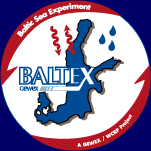CALL FOR PAPERS here
Workshop Summary
From 4-8 May 2009, about 200 scientists from around the world met in Lund, Sweden, for exchanging and discussing the latest developments in regional climate modelling. The number of participants was more than twice as many as in the first workshop in 2004. This reflects the growing interest in regional climate modelling, largely driven by the growing demands of high resolution climate predictions. Since regional climate models are designed to provide high resolution climate scenarios by downscaling global climate models, it was not surprising to see that the main part of the workshop was on dynamical downscaling techniques.
The workshop was divided in seven sessions each on a specific topic. In the session on “Dynamical Downscaling” many presentations were on the spectral nudging technique which was applied on a wide range of application, ranging from the East Asian summer monsoon to polar lows.
Results from the next generation of regional climate models which are applicable to very high resolution simulations (10 km grid mesh size and smaller) were shown and gave an insight on the future possibilities of regional climate models.
A frequently discussed issue was the added value of regional climate models in comparison to global models. Techniques how to distinguish between global and regional effects were presented and illustrated by several examples.
In the session on “New Developments in Numerics and Physical Parameterisations”, some contributions were on the quantitative effects of aerosols in cloud microphysics and the description of contrails. Presentations on the parameterisation of irrigation in soil-vegetation-atmosphere demonstrated the anthropogenic influence on regional climate already taking place today.
Presentations on seasonal forecasting and ensemble prediction were two of the main focal points in the session “From Weather to Climate”.
The session on “Regional Observational Data and Reanalysis” had only few presentations, which reflects the lack in homogeneous long time series (30 years and more) for both regional observational data as well as for regional reanalysis.
In recent years there has been a growing number of “Large Projects”, in which regional climate modelling plays a major role. Results from several of these projects were presented (e.g. ENSEMBLES, NARCCAP, GEWEX/CEOP, AMMA, CLARIS, CLAVIER).
An outlook on the “Future of Regional Climate Models” was given in a special session. One future aspect is the use of regional coupled systems, e.g. regional atmosphere and ocean models will increasingly run in a coupled mode rather than independently. There are even more parts coupled, like ice models, aerosol-chemistry, dynamic vegetation. All this goes into the direction of regional earth system models or regional environment models. Other aspects were the use of GCMs with regional refinement in grid mesh size, dynamic grid stretching and mosaic GCMs.
Results from regional climate predictions are the basic input of many “Impact Studies”. Therefore, a special session was dedicated to this aspect. There was a broad range of applications, dealing with water quality, forest damage, the Sahel zone, socio-economic impacts, urban areas, and mega cities. An example of the impact of land use change on regional climate projections was also presented.
Several social events accompagnied the scientific programme. The ice breaker party took place in the historic white University building of Lund University, right next to the conference venue. A half-day excursion to the nature reserve “Söderasen” was arranged, closed by a buffet dinner in a nearby restaurant. Guided city walks were offered to discover the historic city of Lund.
Extended abstracts of all contributions are compiled in the Workshop Proceedings (International BALTEX Secretariat, ISSN 1681-6471, Publication No.41, April 2009), available online here.
View some workshop photos (Marcus Reckermann) here
Download the workshop proceedings here: Normal (33MB) or Print (66MB) quality.
Download the workshop photo here.
|

